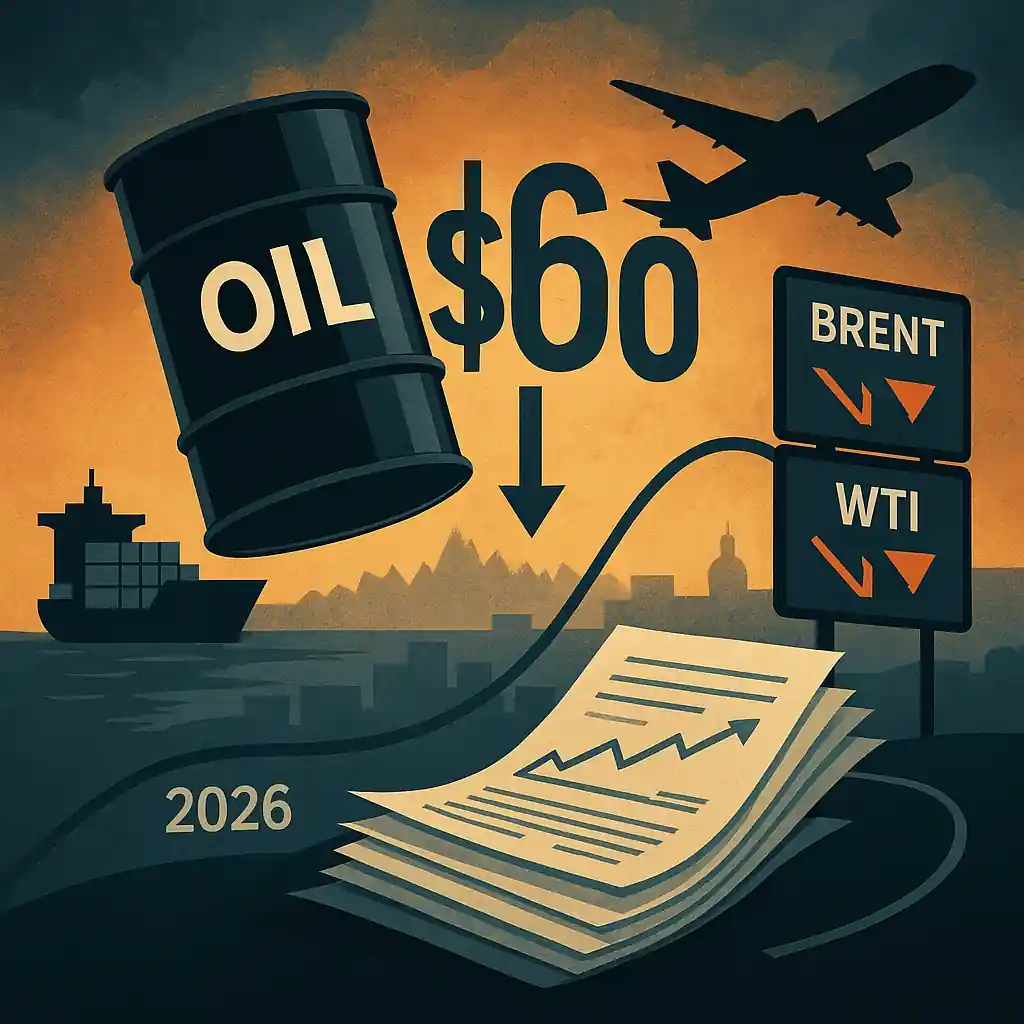Consumers Rush to Hedge as Oil Falls Below $60
As oil prices plummet below $60 a barrel, industrial consumers are moving swiftly to hedge future fuel costs. In one of the largest hedging waves in recent memory, more than 25 million barrels of Brent options traded this week in structures designed to protect buyers from rising prices.
With benchmark Brent crude dropping over 20% in the last week, hedging crude for 2026 has become more attractive than at any time in the past three years. The sharp drop follows a one-two punch: intensifying US-China tariffs that dent demand, and OPEC+’s surprise move to boost supply.
Airlines and Shippers Lead the Hedging Wave
Major consumers of oil, including airlines and trucking firms, are leveraging derivatives to lock in lower prices. These players are seizing the opportunity to secure more favorable fuel costs for the future.
“Many clients have used this setback to rebalance their hedge ratios,” said Arne Lohmann Rasmussen, chief analyst at A/S Global Risk Management. “A few have been waiting patiently for this exact scenario.”
Options Market Activity Hits Record Levels
The surge in hedging sent call option volumes to their highest level since October, when Iran-Israel tensions briefly roiled energy markets. The recent crash below $59 per barrel triggered a fresh wave of defensive positioning by fuel-dependent industries.
For some, however, hedging remains a double-edged sword. While it offers protection against price spikes, it also introduces risks — especially when oil prices fall faster than expected.
Southwest Airlines, long known for its proactive fuel hedging strategy, recently dropped that policy, citing the rising cost of contracts.
Oil Futures Curve Reflects Shifting Dynamics
The impact of consumer hedging is now visible on the oil futures curve. Brent for December 2026 trades at a premium to the equivalent 2025 contract — a clear sign that near-term prices are collapsing faster than long-term expectations.
According to Helge Andre Martinsen, senior oil analyst at DNB Bank ASA, “Clearly consumers are coming in to hedge on the back of sharply lower prices. But shaky macro trends may still deter others.”
Market Jitters and Fuel Security Drive Demand
While price drops offer relief to fuel-intensive industries, fears over global demand remain. With trade tensions and economic volatility escalating, some consumers are still hesitant to lock in future costs, fearing reduced demand for their products.
Yet, for many, this may be the most opportune time in years to secure long-term oil supply at a discount.




